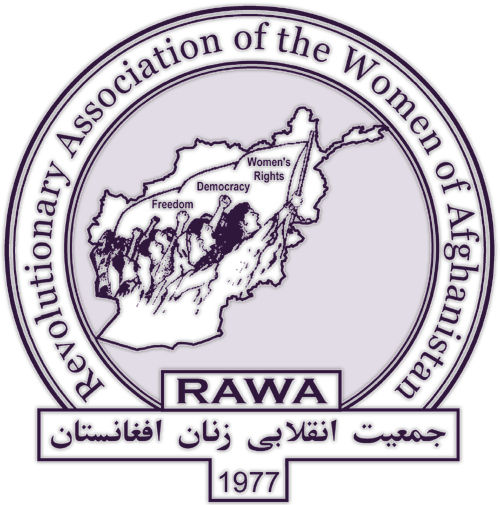Daily Report
Okinawa protesters score win over Pentagon
Following a wave of protests on Okinawa against the planned deployment of a fleet of MV-22 Osprey aircraft by the US Marine Corps at the island's Futenma Air Station, the US Defense Department and Japan's government announced Aug. 5 that they will delay the deployment pending further tests of the aircraft's safety. The protests had the strong support of Takeshi Onaga, mayor of Naha, Okinawa's capital, and also won the sympathy of Yoshihiko Fukuda, mayor of Iwakuni, the city in southern Honshu's Yamaguchi prefecture where the 12 aircraft were to be assembled. In June, a US Air Force Osprey crashed in Florida, injuring all five airmen aboard, while a crash in Morocco in April left two Marines dead. The Ospreys, a hybrid craft that incorporates elements of both planes and helicopters, were to replace older CH-46 helicopters that are currently deployed at Futenma. (Japan Times, Aug. 5; RTT, July 27; AP, July 23; AP, July 20)
Tel Aviv censors Arab presence —and dissent
We've warned before that if Israel continues on its accelerating trajectory deeper into Jewish chauvinism and monocultural supremacy, it may have to forfeit its long-touted claim to the title of the "Middle East's only democracy." (Especially given that Israel is ironically fast becoming a more closed society simultaneous with the unprecedented political opening in the Arab world.) We've also warned that one way this chauvinism is manifesting is in the Judaization of geography in Jerusalem, and censoring of old Arab place names by municipal authorities. Now a similar controversy emerges from Tel Aviv. From Ha'aretz, Aug. 10:
Peru: more protests over mining, water
More than 500 residents in the campesino community of Tumpa in Yungay province of Peru's central Andean region of Áncash, began blocking roads leading to the local operations of the Mina California company Aug. 6, declaring an open-ended paro (civil strike) to demand a halt to the mine's pollution of local waters. The mine is located near Nevado Huascarán, Peru's highest mountain, and the national park of the same name, which forms the headwaters of several of Peru's major rivers. (Servindi, Aug. 6) That same day, Aymara indigenous residents of Acora community in Puno region announced that a 72-hour paro will begin Aug. 13, to protest President Ollanta Humala's plans to move ahead with the Pasto Grande II irrigation project. The Pasto Grande II project would divert waters from the Lake Titicaca basin for agribusiness tracts on the coast in Moquegua region. The strike, called by the South Puno Natural Resources Defense Front, will also protest contamination of local waters by mining and other extractive industries. (Pachamama Radio, Aug. 10; Los Andes via La Mula, Aug. 6)
Peru: state of emergency extended in VRAE
On Aug. 1, Peru's President Ollanta Humala signed a decree extending for another 60 days the state of emergency in the remote jungle area called the VRAE, for the Apurímac-Ene River Valley, where a remnant faction of the Shining Path guerilla movement remains active. However, as we have repeatedly noted, the acronym "VRAE" is becoming an elastic term defined by areas where the Shining Path is active rather than by geography. The state of emergency includes Echarate district, in La Convención province, Cuzco region—in the valley of the Urubamba, the next river basin to the east of the Apurímac-Ene. Similarly, districts of Tayacaja province in Huancavelica region are also affected—in the watershed of the Río Mantaro, to the west of the Apurímac-Ene, and on the edge of the central Andean section of the country. Affected districts in Ayacucho and Junín regions constitute the VRAE "proper"—actually within the Apurímac-Ene watershed. Most of the affected districts have been under a repeatedly extended state of emergency since May 2003, but Echarate only came under the decree in April after guerillas took scores of oil pipeline construction workers hostage.
We need to raise $1,000. The total now stands at $160. Let's go, readers...
OK readers, we have finally unveiled our long-awaited redesign. Now we need to pay for it. We want to hear from you with your feedback. And we also urgently need your support. To get out of debt, we need to raise at least $1,000 dollars. The sooner we can pay it off, the sooner we can put funds toward journalism—more first-hand reports from the frontlines of the indigenous struggle in Andes, and our planned excursion to North Africa and Western Sahara. The kind of reportage on forgotten struggles for land and autonomy around the world that you can only find on World War 4 Report. $1,000 isn't very much—far less than what most alternative websites ask of their readers. Do we have 50 readers that we can count on to give just $20 each? If you value World War 4 Report's work, and want us to be there to continue bringing you news from the Fourth World across Planet Earth, please get the ball rolling on this urgent fund appeal—now, while you are thinking about it!
Peru: Cajamarca dialogue nears collapse
The president of Peru's Cajamarca region, Gregorio Santos, said Aug. 9 that he sees no purpose in continuing talks with two Roman Catholic priests trying to mediate a peaceful solution to the dispute over the proposed Conga gold-mining project. "The facilitators have already completed their tasks," Santos said. "The facilitators aren't going to make any decisions. The executive branch already knows the position of the people of Cajamarca." The statement came the day after facilitators, Trujillo Archbishop Miguel Cabrejos and dissident priest Gaston Garatea (suspended from the ministry by the Archdiocese of Lima for his populist positions), met with Prime Minister Juan Jiménez and other members of President Ollanta Humala's cabinet. The facilitators issued a statement calling on the central government to lift the state of emergency that was imposed on much of Cajamarca region in early July following an escalations of protests against the Conga project. (Dow Jones, Aug. 9; Andina, Aug. 8; CNA, July 24)
Ecuador to export via north Peru pipeline
Ecuador will use the pipeline that links Peru's northern Amazon oil zone to the Pacific coast to transport crude under a deal reached this week. Quito's Non-Renewable Natural Resources Minister Wilson Pastor hailed the bi-national accord as "true energy integration, in which two countries, Ecuador and Peru, are joining forces and needs." He said Ecuador will pay a fee of $10 per barrel of crude extracted from the southern zone of the Ecuadoran Amazon. A 100-kilometer feeder pipeline will be built from Ecuador's border to the Oleoducto NorPeruano, which runs to Bayovar port in Puira region. The deal could facilitate a major industrial thrust into Ecuador's southern Amazonian region. Most of Ecuador's exported oil currently comes from the northern part of its Amazon region, via the SOTE and OCP pipelines. (EFE, Aug. 9; RPP, Aug. 8; A Barrel Full website)
Brazil mobilizes troops to southern borders in anti-narco drive
Brazil on Aug. 8 announced the mobilization of nearly 9,000 military troops to its borders with four neighboring countries as part of an operation aimed at interrupting narco-trafficking networks. Army, navy and air force personnel are being deployed along the frontiers with Argentina, Paraguay, Bolivia and Uruguay, the Defense Ministry said in announcing the mobilization, which has been carried out as an annual exercise since 2007. "One of our objectives is to control the airspace which is being used for illegal activities such as the drug trade and other contraband," said Brigade Commander Jose Geraldo Ferreira. The operation, code-named Agata 5, will last 30 days and bring F-5 fighter jets to the skies above the border zones. It will also involve sending troops to Brazil's Amazon region to crack down on outlaw gold mining. (BrazzilMag, Bernama, UPI, AP, Aug. 8)















Recent Updates
46 min 12 sec ago
1 hour 5 min ago
1 hour 21 min ago
4 hours 29 min ago
1 day 7 hours ago
2 days 12 hours ago
3 days 1 hour ago
3 days 1 hour ago
4 days 1 hour ago
4 days 1 hour ago